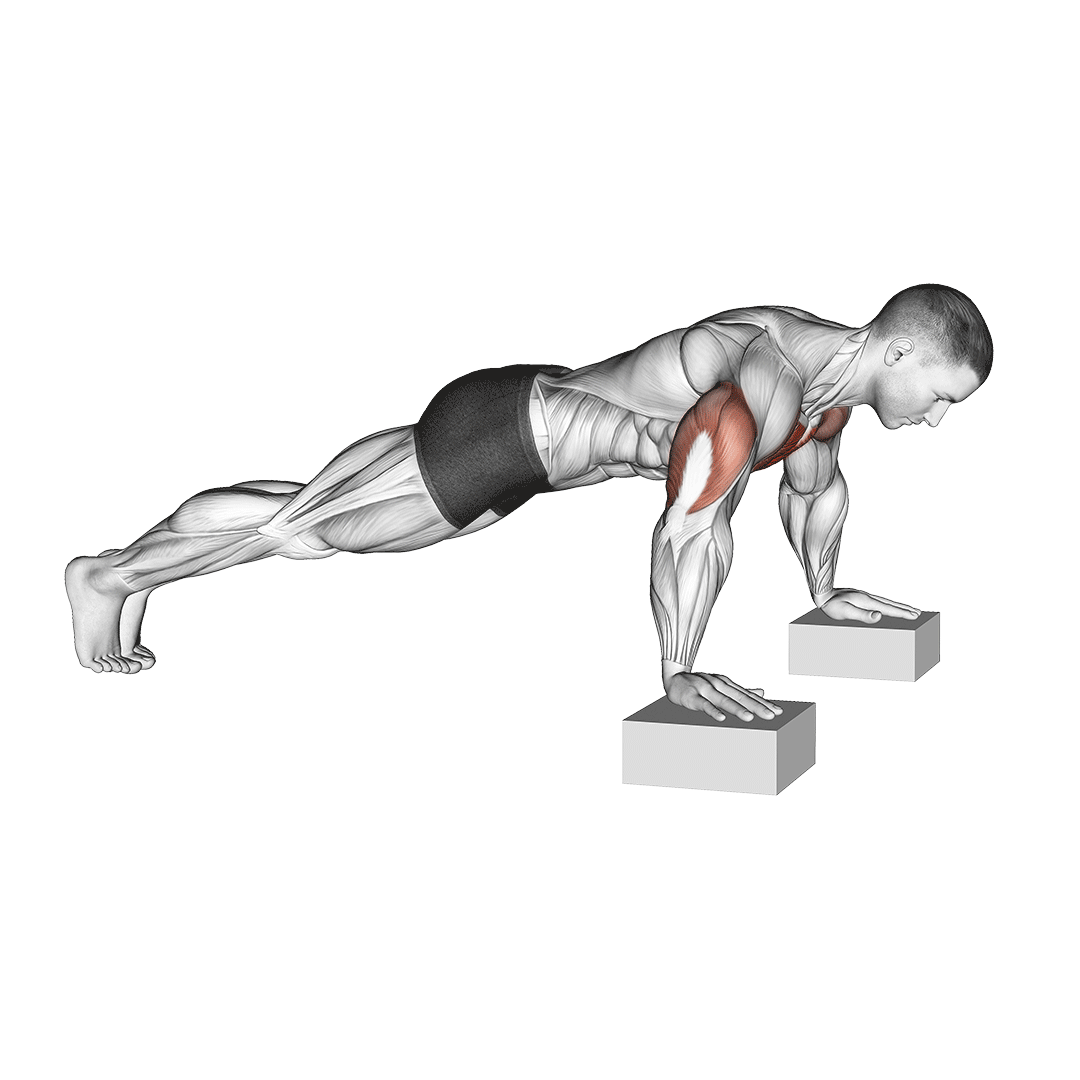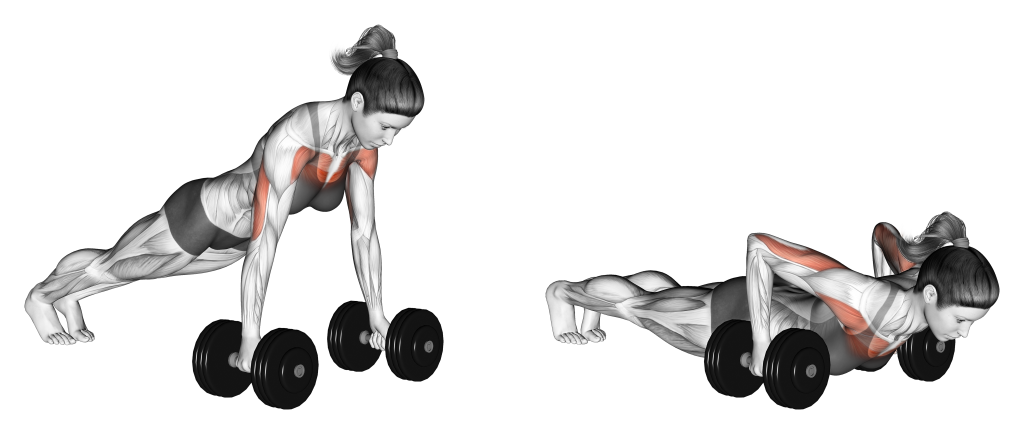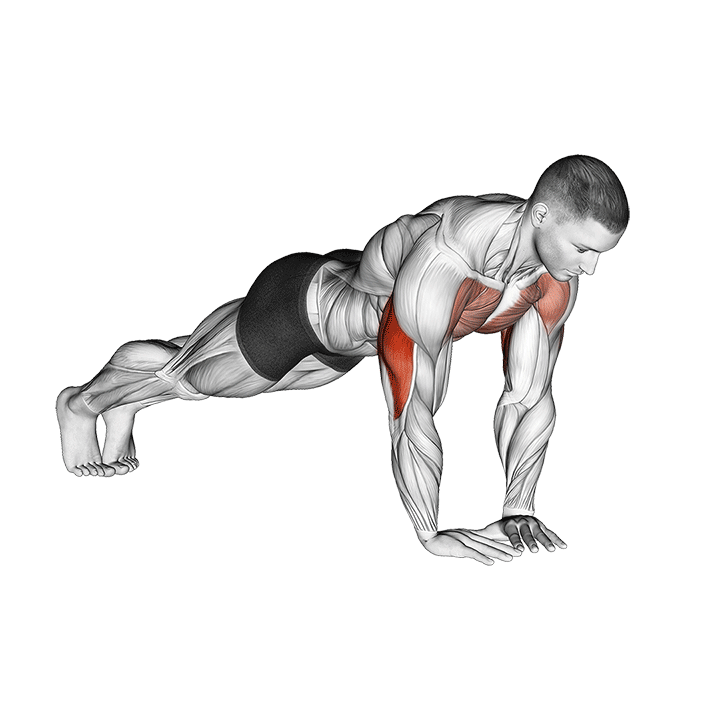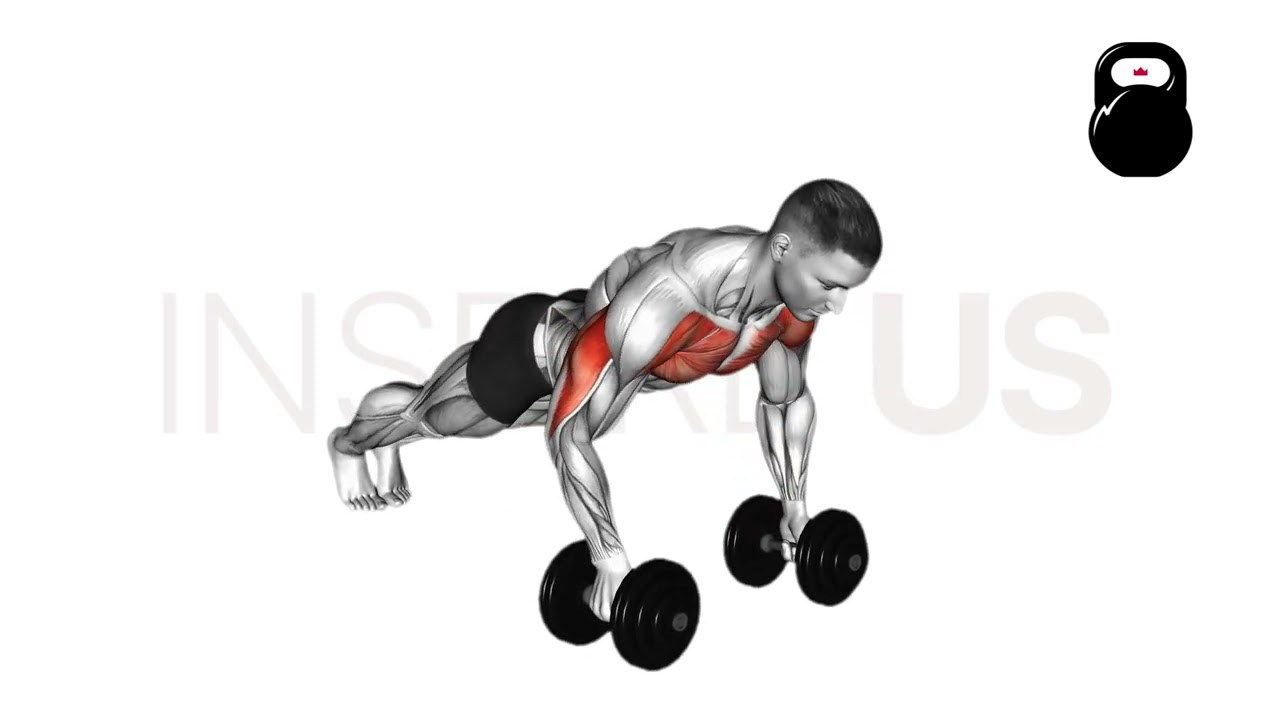Deficit Push Ups Exercise Overview: Muscles Worked and More
The deficit push-ups is an advanced variation of the conventional push-up where the lifter’s hands are elevated higher off the floor - allowing for a greater range of motion and improved chest muscle recruitment.
The movement itself is practically identical to a conventional push-up (plank stance, significant elbow flexion and external shoulder rotation), only with a deeper bottom position.
Deficit Push Ups at a Glance
Equipment Requirements
Platform to Elevate the Hands (ex. Dumbbells, Weight Plates, Yoga Blocks, Parallettes)
Main Muscles Targeted
Pectorals, Triceps Brachii, Anterior Deltoids
Difficulty
Moderate
Sets, Reps, and Load Recommendations
3-5 Sets of 10-20 Repetitions With Bodyweight Resistance
How to Do Deficit Push-Ups
- Performing a deficit push-up is practically the same as doing a regular push-up. To do so, the lifter will first enter a high plank stance with their hands atop their elevated platforms.
The glutes should be squeezed and the core braced so as to form a straight line with the entire body, the hands themselves horizontally parallel to the shoulders while wider than shoulder-width apart. - Now positioned correctly, the lifter then bends at the elbows and slowly lowers their chest towards the ground - descending between the hands and even beneath them if shoulder mobility allows.
- Once reaching the limits of their range of motion, the lifter then drives through their palms and pushes their trunk back upwards.
- With the elbows now fully extended and the upper torso returned to its original position at the start of the movement, the repetition is considered complete.
Additional Tips:
Deficit push-ups can be especially hard on the shoulder joint due to the relatively larger range of movement involved.
Ensure that you are sufficiently stretching and warming up both the shoulder joint and rotator cuff prior to performing the exercise.
Another tip is to angle the fingers slightly outwards when securing the push-up stance, as this will reduce the risk of the wrists rolling inwards and provide more surface area to drive through during the mid-point of the rep.
Sets and Reps Recommendation:
Owing to differences in body weight and strength levels, calisthenics exercises can be difficult to program for a wide audience.
However, a good range would be 3-5 sets of 10-20 repetitions for intermediates and novices.
What Muscles Do Deficit Push-Ups Work?
Deficit push-ups are a compound movement, meaning that they target more than a single muscle group at once.

Primarily a pectoral muscle exercise, the deficit push-up will also work the triceps brachii and anterior deltoids in a secondary capacity.
Common Deficit Push-Up Mistakes to Avoid
Apart from selecting an appropriate hand elevation, avoid the following common mistakes to get the most out of your deficit push-ups.
Arching the Back or Tilting the Chest Upwards
Apart from increasing the strain placed on the lower back, arching the back or tilting the trunk so that the chest angles upwards can also partially negate the benefits of the deficit push-up.

In order to ensure a full range of pectoral contraction is achieved, the back should remain flat throughout the set, with the chest puffed outwards but nonetheless still facing the ground.
One cue lifters can use is to imagine tucking their ribs into their stomach - a cue that conveniently also doubles for proper abdominal contraction while in a plank stance.
Flaring the Elbows Outwards
As is the case with practically any horizontal pressing movement; allowing the elbows to flare outwards can greatly increase strain within the elbow joint itself.
In addition, the humerus rotating within the shoulder joint at such an angle will also increase the risk of shoulder injuries.
Just like with any other variation of push-up, the deficit push-up should feature the elbows remaining close to the sides of the trunk throughout the entire set.
Rather than pointing horizontally outwards at the midpoint of the rep, they should instead point behind the body at an angle.
Hands Too Close Together
Though a close grip push-up is a perfectly viable method of training the triceps, setting the hands too closely together can actually counter the advantages of a deficit push-up.

This is because less space is afforded to the chest as it descends, reducing how well the pectoral muscles are contracted and limiting range of motion.
For the ideal deficit push-up, the hands should be at least several inches wider than the shoulders - if not even further apart.
Rapid Descent or Poor Tempo
Due to the greater depth allowed by elevating the hands off the floor, the deficit push-up is especially likely to cause pectoral tendon and shoulder joint strain if performed incorrectly.
One of the most common causes of acute injury is poorly controlled tempo - a mistake that is also frequently encountered with push-up variations of all types.
Apart from increasing the risk of injury, performing deficit push-ups in this rapid and uncontrolled manner negates much of the training stimulus that would be otherwise present.
As such, lifters should focus on a slow and controlled descent with each repetition of the deficit push-up. Avoid rapidly dive-bombing the movement or allowing gravity to assist by pulling the trunk downwards.
Who Should Do Deficit Push-Ups?
Deficit push-ups are essentially a direct upgrade to the conventional push-up.
Outside of absolute novices, they are perfect for just about any type of exerciser, and are excellent for achieving greater development of the pectoral muscles.
Of course, it goes without saying that individuals with a history of shoulder, wrist or elbow issues should avoid the movement unless otherwise instructed by a medical professional.
References
1. Kim YS, Kim DY, Ha MS. Effect of the push-up exercise at different palmar width on muscle activities. J Phys Ther Sci. 2016 Jan;28(2):446-9. doi: 10.1589/jpts.28.446. Epub 2016 Feb 29. PMID: 27064571; PMCID: PMC4792988.

